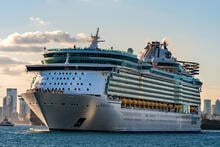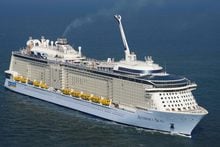It's no surprise that new cruise ships are exciting and in high demand, but why does Royal Caribbean keep older ships in service?
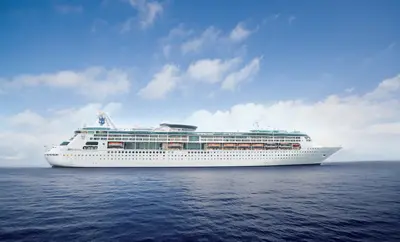
Royal Caribbean seems to redefine "bigger and better" with the launch of each of their new cruise ships, as they constantly break their own record for the largest cruise ship in the world. The demand for these ships is larger than ever before, too.
All standard cabins for Icon of the Seas' maiden voyage sold out in less than 24 hours! They're also adding another Icon Class ship to their fleet in 2025 with Star of the Seas' launch scheduled for August.
What about older ships, though? It is evident that Royal Caribbean wants to keep them around as long as possible. If they didn't, they would not have spent hundreds of millions of dollars upgrading ships through their Royal Amplified fleet modernization.
Don Goldstein, a retired Commander of the U.S. Coast Guard, worked for the Coast Guard for about 30 years and was involved with the regulation and inspection of commercial vessels, including passenger and task vessels, and the ports that serve them.
He was also involved in cleaning oil spills in the marine environment, having completed over 20 discharges of 1 million gallons or more!
During Commander Goldstein's career, he was stationed on all 3 coasts of the United States: Atlantic, Pacific, and Gulf. Additionally, he has represented the Coast Guard's business in North and South America, Europe, Africa, South East Asia, and the Far East.
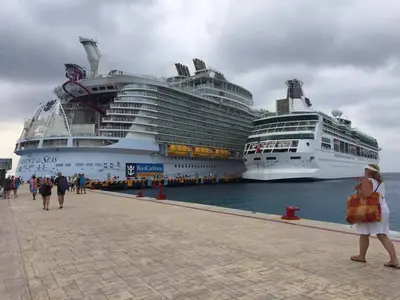
In our conversation with Commander Goldstein, which has been edited for length and clarity, we talked about what a cruise ship's dry dock entails, today's environmental concerns, the life expectancy of modern-day cruise ships, and what it takes to keep the older ships in service!
Today, there are cruise ships operating that are as much as 26 years old. How do cruise lines like Royal Caribbean ensure that they stay well-maintained?
Commander Goldstein: Routine maintenance is an ongoing process, well-planned and supported. It is much more than periodic dry docks. Maintenance is done continually during the life of the ship. For instance, they can (and do) change out an entire piston on an engine while underway.
The maintenance is accomplished on a planned cycle for each system and happens every day in accordance with the plan. This includes changing filters, cleaning valves, and piping, changing hydraulic fluids, testing emergency systems like emergency generators, testing backup steering systems, etc.
Dry docks are planned years in advance due to ordering necessary parts, having the right contractors present, etc. All hull openings are checked and the valves are cleaned or replaced. All primary systems, including firefighting, navigation, and lifesaving are inspected or replaced.
Anchor chains and lifeboat cables may be “end-for-ended," and all lifeboat food and water are inspected and/or replaced. Other issues or concerns that have occurred may be dealt with, such as when Allure’s azipod needs work.
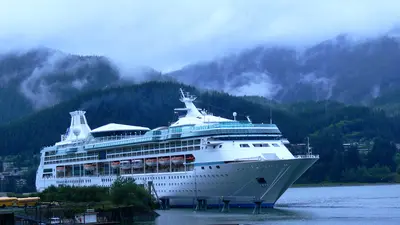
How long is the life expectancy of new cruise ships? Take Royal Caribbean's Wonder of the Seas, for instance, which debuted in mid-2022. What do you think her life expectancy is with today's technological advancements?
Commander Goldstein: The life expectancy has increased over the years due to better materials, better design, and better maintenance. I would think Royal Caribbean expects to get at least 30 years of service out of any ship built in the last 15 years or so, including Wonder.
How does the life expectancy of today's ships compare to those from the early 2000s?
Commander Goldstein: Every new ship probably has a longer life expectancy than the last one, but it is incremental. For ships built in the 1990s, I expect they wanted to get at least 25 years of service.
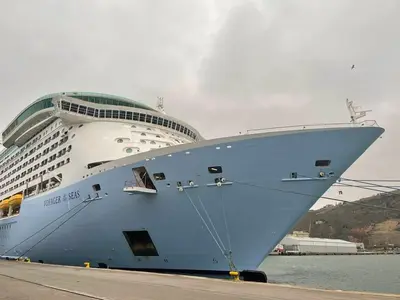
How do these older ships remain in service, and do they have to be serviced more frequently than newer ships? What goes into keeping older cruise ships alive and well?
Commander Goldstein: All ships, old and new, go into dry dock twice in any five-year period, with no span longer than 36 months between dry docks. This is when they do major work on the engines, piping, life-saving equipment, structure, etc. Typically, the hull is at least inspected and cleaned, if not painted. Older ships may require more extensive work in the dry dock due to changes in technology, as well as normal wear and tear due to the ravages of the saltwater environment.
Saltwater and most metals don’t get along well. Just about everything on a ship will deteriorate over time, and require replacement or reconditioning. Newer coatings (i.e. pain) do a better job of protecting metal, but it’s still not perfect. Older ships have been exposed to this environment for a longer period of time and need more TLC. Since they do many things at one time while in dry dock, this does mean that older ships necessarily take longer.
What is the functional part of a ship that tends to wear out first?
Goldstein: That’s really hard to say due to the ongoing maintenance done throughout the life cycle of the ship.
Around what age does the ship's safety really come into question, or is it more about the cost of keeping it up-to-date?
Goldstein: Again, due to the ongoing maintenance and inspection by both the Flag State and Port States, it is more a question of the cost of maintenance and if are they going to do keep paying for it.
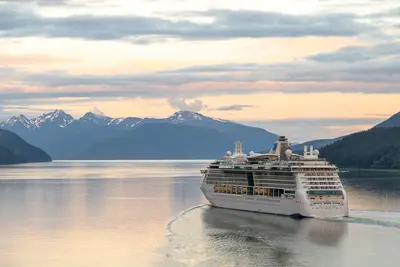
What is the key indicator that a ship is ready to be retired and/or scrapped?
Commander Goldstein: That is an easy answer: money and the cost of maintenance versus. the cost of the cabins and passenger loads. If one is willing to spend unlimited money, you can keep a ship running almost forever.
As was pointed out earlier by, I think, Michael Bayley, the older ships break-even point is 50% of capacity, while for the newer ships it is closer to 35%. He didn’t say word-for-word, but I suspect the introduction of azipod technology has a lot to do with this. Routine maintenance isn’t cheap, and there is a point where it is not economically feasible to maintain the ship.
At that point, they will typically sell the ship to a lower-end cruise line, such as Sovereign of the Seas being transferred to Pullmantur in 2008 at the age of 20 years and renamed Sovereign. She was scrapped in 2020 after 32 years of service. Grandeur currently is Royal Caribbean's oldest ship at 27 years of service.
Engine issues seem to be common for older ships. I know Norwegian Star got theirs replaced in 2021, and Grandeur of the Seas' maximum cruising speed was slowed down in January 2023 due to engine troubles. In theory, could they go their whole lives and never have the engine replaced?
Commander Goldstein: Due to the ongoing maintenance, major engine problems are relatively rare on cruise ships. The decision to change engines is not taken lightly. These engines are HUGE, and they have to remove a section of the hull to remove and replace the major engines. In the case of the Norwegian Star, I’m sure a good part of the decision to replace the engines was based on efficiency. Grandeur's reduced speed may have been at least partially the same thing.
With more and more ships turning to LNG, do you think this will impact the lives of older ships? In other words, do you think they will be retired and/or scrapped earlier due to environmental concerns?
Commander Goldstein: LNG ships are more efficient than oil-powered ships, but I think the bigger concern is the increased environmental awareness on the part of many littoral states and countries. For instance, new international regulations are reducing ships’ speed as they approach many ports in an effort to reduce emissions from the ships.
I also think that the growing environmental regulations will cause older ships to be retired, or transferred to smaller cruise lines that go to more isolated ports. I live very close to Tampa, and I hope Royal Caribbean Group builds some newer and more efficient small ships that will fit under the Sunshine Skyway Bridge, so they can continue to use Tampa as a home port (and places like Baltimore, too).
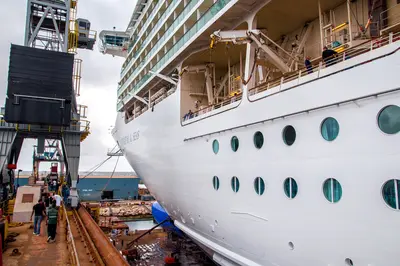
What is different about the process of how cruise ships are designed today compared to 30 years ago? I am sure that there's a lot more that must be taken into consideration!
Commander Goldstein: The International Convention for the Safety of Life at Sea (SOLAS) set international standards for building and maintaining seagoing vessels. These standards are continually updated and modified to take into account new materials, technologies, and safety.
Every casualty will produce new requirements. For instance, the Costa Concordia disaster in 2012, although due to human error, produced many new requirements, including the requirement to do the passenger safety briefing (muster drill) prior to the ship's departure.
Royal Caribbean ships by age
Grandeur of the Seas (1996)
Rhapsody of the Seas (1997)
Enchantment of the Seas (1997)
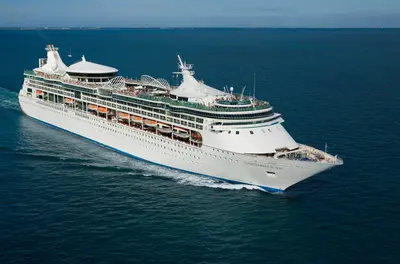
Vision of the Seas (1998)
Voyager of the Seas (1999)
Explorer of the Seas (2000)
Radiance of the Seas (2001)
Adventure of the Seas (2001)
Brilliance of the Seas (2002)
Navigator of the Seas (2002)
Serenade of the Seas (2003)
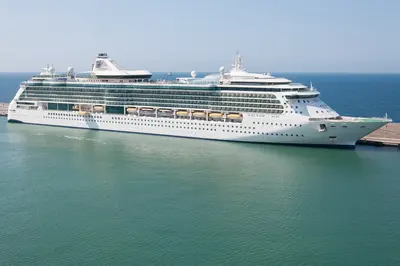
Mariner of the Seas (2003)
Jewel of the Seas (2004)
Freedom of the Seas (2006)
Liberty of the Seas (2007)
Independence of the Seas (2008)

Oasis of the Seas (2009)
Allure of the Seas (2010)
Harmony of the Seas (2016)
Symphony of the Seas (2018)
Wonder of the Seas (2022)
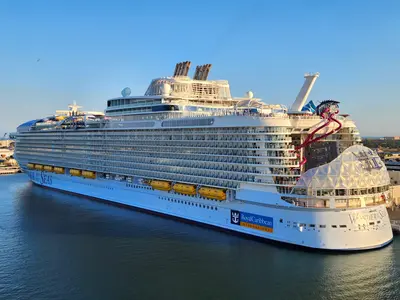
Icon of the Seas (2024)
Utopia of the Seas (2024)
Star of the Seas (2025)**





